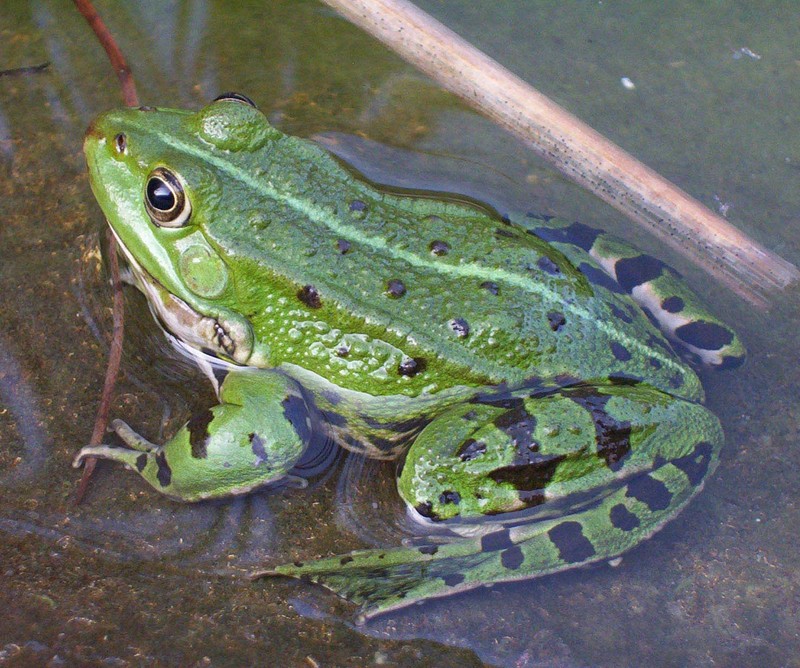Edible Frog (Rana esculenta) ) - Wiki Edible Frog
From Wikipedia, the free encyclopedia
[Photo] Selbst fotographiert im Juli 2004, daher GFDL. Fotograph: Leo Bogert. Date: 17 July 2004
The Edible Frog (Rana kl. esculenta) is a name for a common European frog, also known as the common water frog or green frog (however, this latter term is also used for the North American species Rana clamitans). It is used for food, particularly in France for the delicacy Frogs' legs. Females are between 5 to 9 cm long, males between 6 to 11 cm.
Rana esculenta is the fertile hybrid of the Pool Frog (Rana lessonae) and the Marsh Frog (Rana ridibunda), hence the addition of the "kl." (for klepton or synklepton) in the species name. During the ice ages the population of the common ancestor of both species was split into two. These populations diverged, but remained genetically close enough to be able to create fertile hybrids. However, when edible frogs mate with each other, their offspring are often misformed, so there are no pure populations of edible frogs. The hybrid populations are propagated by female edible frogs mating with males of one of the parental species.
http://en.wikipedia.org/wiki/Edible_Frog
| The text in this page is based on the copyrighted Wikipedia article shown in above URL. It is used under the GNU Free Documentation License. You may redistribute it, verbatim or modified, providing that you comply with the terms of the GFDL. |
